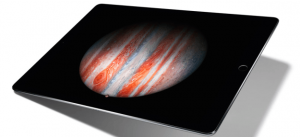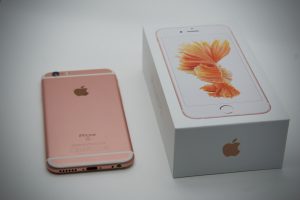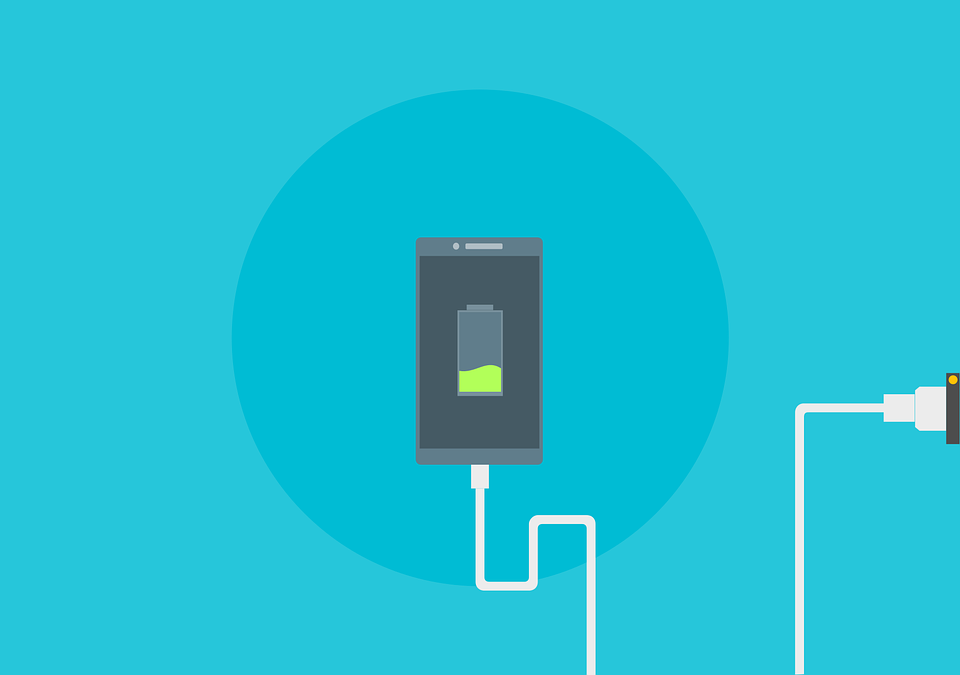![[ot-caption title="Apple held its keynote event on the new iPhone and iPad in San Fransisco. (via, Pixabay)"]](https://pcpawprint.com/wp-content/uploads/2015/09/apple-inc-508812__180.jpg)
A big portion of the presentation was focused on Apple’s updated tablets, which was the iPad line. Titled the iPad Pro., at 12.9 inches diagonally, the screen on this multitouch slab size rivals their laptop offerings. This is the main attraction to the product (as underscored by Apple’s execs). The claim being made is that with an even more massive screen, even more powerful applications can be created and run on this device. As such, the iPad Pro (along with the iPad Air 2 of yesteryear) has the capability of running two applications on the screen simultaneously for true multitasking. For reference, the width of the screen on the iPad Pro is the same distance as the length of the regular 9.7 inch iPad Air. In addition, greatly enhanced internal specifications such as a four speaker audio, an A9X chip that has two times the graphical performance of the iPad Air 2, and advanced wireless connectivity antennas, allow this tablet to provide an unrivaled media consumption experience. This new gadget is targeted for productivity users and business people who have the deep pockets to shell out $799 for the base model and $1079 if they want LTE connectivity.
The reality is that I have described an incredible version of a tablet that is already on the market. Likely, this is the Achilles heel of the iPad Pro. The iPad Pro runs the same software, iOS 9, as any other iPad. Coming to market later this fall, this super-sized tablet only provides a few external enhancements like two expensive accessories, a keyboard case and stylus (dubbed the Apple Pencil) for $169 and $99, respectively. As such, if unless you are willing to spend $300 more for a bigger screen, most people will be better off purchasing the iPad Air 2 or the newly revamped iPad Mini 4. This device has received a spec bump to be equivalent to the Air 2 while sustaining the $100 lower price tag and a smaller size.

In addition, Apple debuted a new addition to its perpetually popular iPhone series. The baseline models of the iPhone 6S and 6S Plus, released on September 25, will contain 16 GB of internal storage and will be priced at $199 and $299 respectively. Each phone comes redesigned with slightly larger dimensions without altering the sizes of the screens (4.7 inches for the iPhone 6S and 5.5 inches for the iPhone 6S Plus). The screens themselves are reported to be made of a chemically strengthened glass. This material update complements Apple’s decision to implement aerospace-grade aluminum to construct the metallic bodies of the phone, making it even stronger and sturdier. Additionally, Apple improved the megapixel count of its cameras, allowing for the iPhone to be able to capture video in 4K quality at 30 frames per second. The new device featured a smaller battery, the new A9 processor (the quickness of which is supposed to dwarf that of its A8 predecessor) and the iOS 9 operating system.
New to the world of iPhones and analogous to the Force Touch of MacBooks is a new method of touchscreen interaction known as 3D Touch. It’s purpose is to add an additional dimension of navigation, utilizing a pressure-sensitive mechanism integrated into the hardware of the phone. Pressing heavily on the screen will induce the appearance of application-specific menus and trigger special features of select photographs—when 3D Touch is activated, the iPhone will vibrate gently, which is similar to features found within the Apple Watch and many Android phones. Finally, Apple plans to release both the iPhone 6S and 6S Plus in rose gold, a color new to the traditional lineup of space gray, gold, and sliver.

Overall, while many consumers are quite excited for the latest Apple products to hit the market, there are still critics who criticize the company’s lack of structural innovation. Only time will reveal how the fruits of Apple’s technological labor are received by the general public.
































![Stranger Things 4: What to Expect [Warning: Contains Spoilers]](https://pcpawprint.com/wp-content/uploads/2021/11/StrangerThings4-900x473.jpeg)






















































![[ot-caption title="Members of the press await the commencement of Apple's event in September at the Bill Graham Civic Auditorium. (via, Mashable)"]](https://pcpawprint.com/wp-content/uploads/2015/09/appleevent.jpg)











